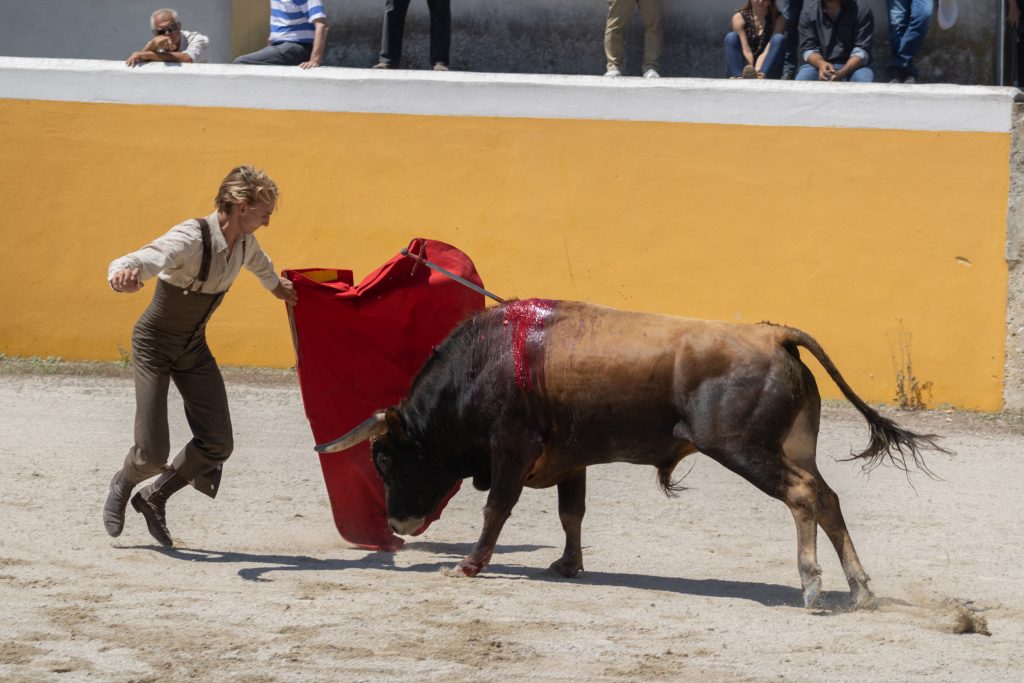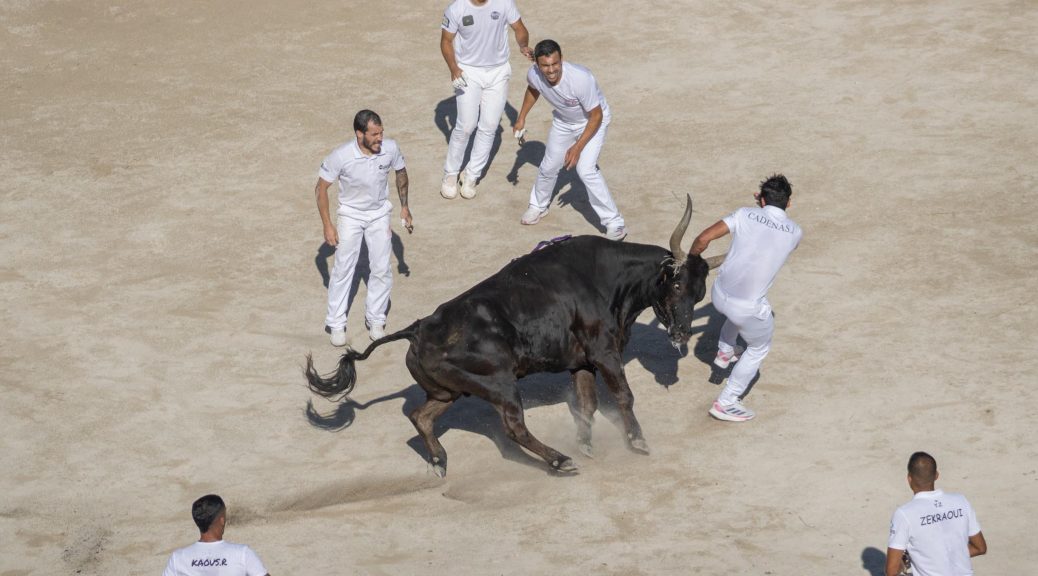Story by Ella Lepkowski. Photos by Sam Guzman
Longtime Arles resident Dominique Arizmendi was sitting in the stands of an arena as bullfighters jabbed a bull in the neck several times until it couldn’t raise its head. When the matador finally killed it with his sword, the crowd cheered. But Arizmendi was disgusted. “I felt like I was on another planet,” she said.
When one considers the essence of French culture, the mind often paints a vivid picture, dominated by the iconic imagery of Paris: alleys with old architecture, freshly baked baguettes and croissants with cheese and chocolate on the side, and perhaps even fervent protesters filling the roads. In the southern region of France, however, a vibrant ambiance with distinct Mediterranean and Latin influences continues to thrive, particularly in the provincial city of Arles where the corrida, or bullfighting, season lasts from the second Sunday of March to the end of September.
Now Arles, a provincial city in the South of France, finds itself at a crossroads. With anti-corrida protests echoing through the streets and a growing majority in favor of banning the age-old tradition, Arles has become a battleground for conflicting opinions on the ethics and future of bullfighting. As the spotlight shines on this vibrant Mediterranean city, the clash between passionate advocates and fervent opponents reveals a deeply divided society grappling with the moral complexities surrounding this controversial spectacle.

While the true history and origins of bullfighting is blurred as it has been influenced by many different cultures spanning a long period of time, historians can trace an idea of how modern bullfighting appeared in Spain. During the Moorish rule of Spain (8th to 15th century), bullfighting in its early form emerged as a combination of pre-existing traditions. Moors created contests involving bull-leaping and bull-dodging, which were eventually blended with local customs.
Controversies rose from the ethical concerns of bullfighting. Queen Isabella I, for example, opposed bullfighting, and the practice went underground in the 15th century. In 1567, Pope Pius V issued a complete ban on bullfighting, excommunicating Christian nobles who supported such spectacles. But by the 18th century, bullfighting was back and had transformed into a highly stylized and formalized spectacle in Spain. Key elements such as the three-stage structure (tercio), the use of specific tools (such as the cape and sword), and the involvement of bullfighters (toreros) began to take shape.
Bullfighting faced a challenge in 2012 when an animal rights organization sent a request for a ban to France’s Constitutional Council. The request, however, was shot down under the premise that the practice is not unconstitutional, and is traditional to the South of France. Defenders of bullfighting also point out the significant economic impact the sport has, as the practice greatly attracts tourists.
Although France’s Constitutional Council rejected the plea for bullfighting to be banned and despite the enduring presence of bullfighting as a cultural tradition, recent statistics reveal that a majority of French people leans toward the anti-corrida stance. According to survey data collected by IFOP (The Institut français d’opinion publique), a staggering 74% of French citizens are in favor of banning bullfighting. These findings and the anti-corrida protests each year in Arles highlight the strong opposition to bullfighting in France, reflecting a significant clash in societal attitude towards the ethics and morality surrounding this controversial spectacle.
“I can’t stand having animals tortured to death,” Arizmendi said.
According to Arizmendi, the primary ethical concerns associated with bullfighting are rooted in the inherent cruelty of the practice.
“It’s hard for me to understand how people can do this,” she said. “It’s not to eat. It’s not a slaughterhouse to get meat. It’s a show for fun, so I don’t understand how people can have fun watching an animal be tortured and put to death.”
To actively participate in the anti-corrida movement and advocate for its cause, Arizmendi and her group, named No Corrida, organize protests in the streets and gather signatures for petitions in hopes that these efforts will help change the law.
Arizmendi differentiates the course camarguaise, a traditional form of French bullfighting that still currently takes place in the Camargue region, from corrida. “People don’t hurt, torture, or kill the bull.” She explains that the corrida is Spanish bullfighting, whereas the course camarguaise is a French tradition that has existed for a long time.

Arizmendi also rebuts the worry that a corrida ban would have negative implications for the economy and tourism. The feria, the fair in which the bullfighting course camarguaise takes place, is what brings in the money.
“All the people who come for the feria do not go to the corrida,” she said, explaining that the majority of the bulls raised are destined for the slaughterhouse, not for the arena.
Arizmendi acknowledges the financial support provided to bull breeders and organizers through taxes, but says, “We don’t want that anymore because these are taxes from French people, and most French people don’t know it. The corrida absolutely does not have any economic consequence for the country, the cities, or the regions. On the contrary, it costs money. It does not create revenue.”
While opponents of bullfighting condemn the practice, claiming it to be cruel and inhumane, the outlook from the other side tells a completely different story. The bull holds a special place in their hearts.
“We love the bull more than anything,” said Charlie Laloe, a retired bullfighter. To them, the corrida represents something wholly unique. “They are not in cages like a meat breed.”
For some, bullfighting symbolizes a fierce battle, while for others, it is an artistic expression, akin to a captivating dance. Thomas Joubert, a bullfighter and founder of ASSPA, an inclusive sports organization, says, “The first thing I take with me when I go to my practice…is my music. This part is what I like.”
However, Joubert acknowledges the solemnity of the final act, stating, “The moment we kill the bull, I think for most of the bullfighters, is the moment we don’t really like…even more when we spend time with the bull.”
Frédéric Poudevigne, the head veterinary inspector for the Ministry of Agriculture, also emphasizes the profound significance bullfighting has for the practitioners.
“A bullfighter, as soon as he gets a little bit of money, even if he kills (bulls) every day, will buy some cows and buy some mothers and have his own breed, which he will visit every day, and show to all his friends,” Poudevigne said. “If we stop the fight with the animal, we disappear.”
Yves Lebas, president of a bullfighting school in Arles called L’ecole Taurine D’Arles, claims that, in some ways, the anti-corrida movement has brought more violence than corrida itself. He said some activists reportedly sent envelopes with razor blades to the training school for bullfighting.
In response to the animosity directed toward bullfighting, Joubert emphasizes the importance of mutual respect. “I have to respect your idea, you have to respect mine.”



